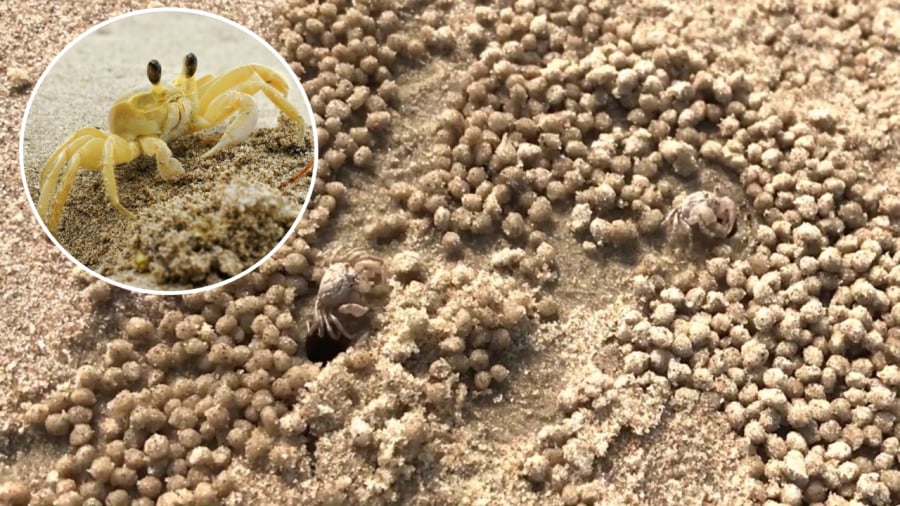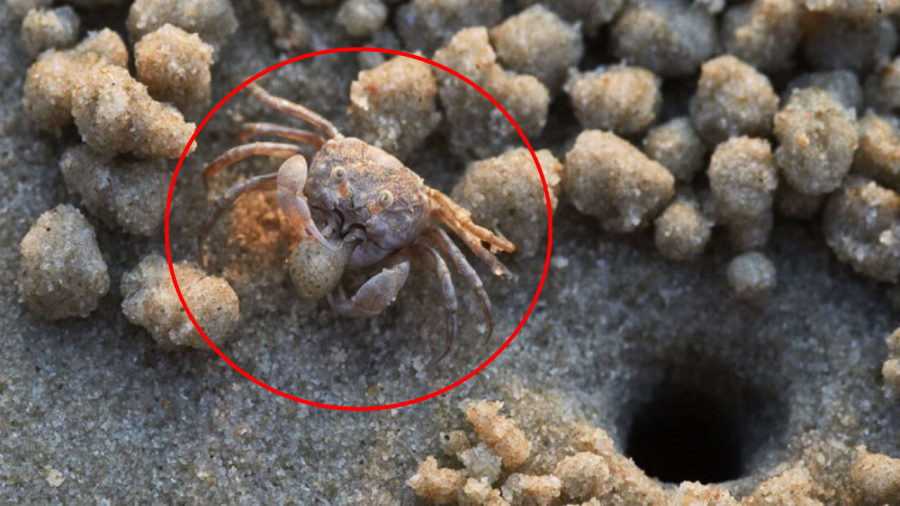As the tide recedes on tropical beaches in the Indo-Pacific region, locals and tourists alike are treated to a unique sight: millions of tiny sand balls, crafted by an army of beach hoppers.
Beach hoppers, also known as sand crabs, are fascinating creatures belonging to the Scopimera and Dotilla genera within the Dotillidae family. There are 59 known species of these unique crustaceans, each with a specially adapted mouth that has evolved to make them expert sand sorters. Beach hoppers gather sand from their small burrows and pass it through their mouths, using moisture from their bodies to shape it into perfect little spheres. As they process the sand, they filter out tiny organic matter and micro-organisms, which become their meal.

The diligent sand crab, hard at work
Creating these sand balls is no easy task, as the beach hoppers are constantly under threat from predatory birds. While their external skeleton provides some camouflage, they are still vulnerable to detection. When danger looms, they employ a clever escape tactic, moving in a spiral pattern to quickly retreat into their burrows.
Evolution has gifted beach hoppers with a remarkable ability to maintain water levels and breathe while filtering sand through their mouths. They breathe on land through a specialized part of their legs, while tiny hairs on their legs absorb water from the sand as they move.
When the tide is low, beach hoppers scurry out to feed. As the waves roll in, they seek suitable hiding places, often burrowing shallowly and constructing dome-like structures with wet sand. The crabs remain inside these self-made “bubbles” during high tide, emerging again when the water recedes to continue their sand-sorting activities.
A popular folk saying, “The beach hopper toils in vain, raking the sand of the Eastern Sea,” suggests that the crab’s efforts are futile and fruitless. However, the reality is quite the opposite, as sand raking is their primary means of sustenance.

A folk saying depicts the beach hopper’s seemingly futile task.
This saying originates from a folk tale about a man named Dã Tràng, who, after being tricked by the Dragon King, tirelessly raked the sand in hopes of reaching the underwater palace to retrieve his precious gems. Despite his relentless efforts, he never succeeded, and the phrase “Dã Tràng se cát biển Đông” has come to symbolize perseverance in the face of seemingly insurmountable odds.

































